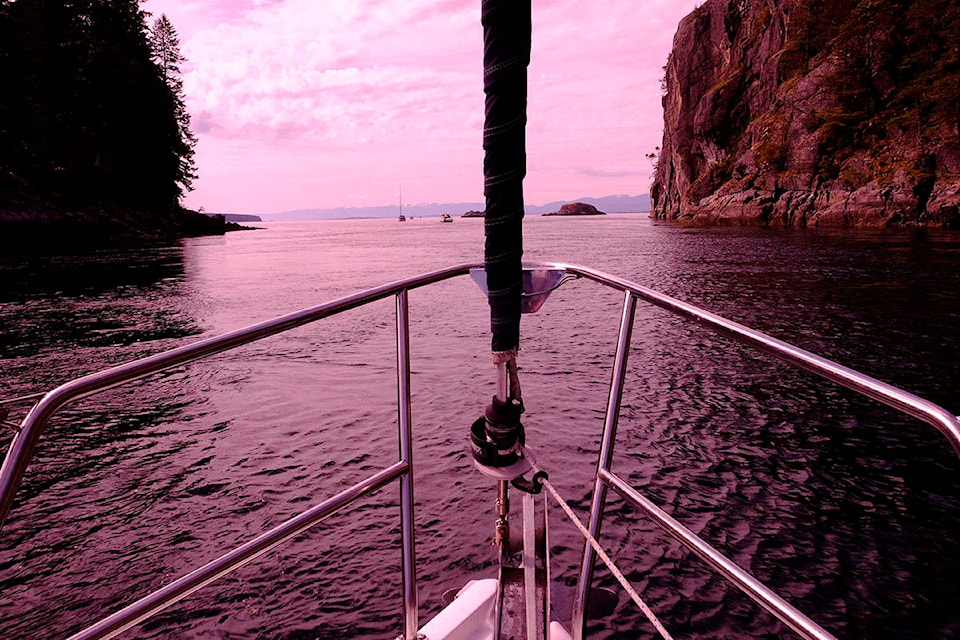Barbara Thompson
Special to The Record
Just imagine this: I was lazing in the cockpit of our sailboat anchored in a small bay near Tree Island.
The sunlit waves had lulled me into a potato chip stupor, while I squinted at a nearby pleasure boat, maybe a 24-footer, much closer to shore, with no one on board. Then I noticed a line from the bow of the powerboat tied to a log on the beach. I thought, astutely, that log looks small, and soon after, that log is moving. Yes, the log was now floating alongside the boat, free of the shore. Then boat decided to leave with the log. Together, they had found love and they were heading out to sea with the help of the bay’s strong and obliging current.
We all know ocean water moves around. It’s the speed and power that catches us by surprise. By simple definition, the tides go up and down and currents move back and forth. We know the gravitational tug-of-war between the sun and the moon on the earth, predictably as day and night, raise and lower the ocean levels twice in a 24-hour day. Currents, however, are influenced by a variety of forces: tide, weather, temperature, salinity, ocean floor and land features, and they can be surface or deep, global or localized. Currents are described in three ways: set, rate, and drift. Set is the direction, rate is the speed, and drift is the distance your boat and log will travel over a period of time.
Fan through Port and Passes 2020 Tides & Currents, Washington Inside Waters, British Columbia, & Southeast Alaska; this easy-to-use spiral-bound text tells you what the ocean is doing and when and where it plans on doing it. Or you could download and print specific area tables from the Fisheries and Oceans Canada website below. Also free are multiple cell phone applications, like My Time Tides or Tides Near Me. Larger devices, like Garmin chart plotters, can offer as much data about the water under your boat as your wallet is deep. There’s never been such a wealth of free information about tides and currents, print or digital, to lower risk. Of course, there’s always the old-fashioned yell, “Hey Mister, your boat’s gone!”
